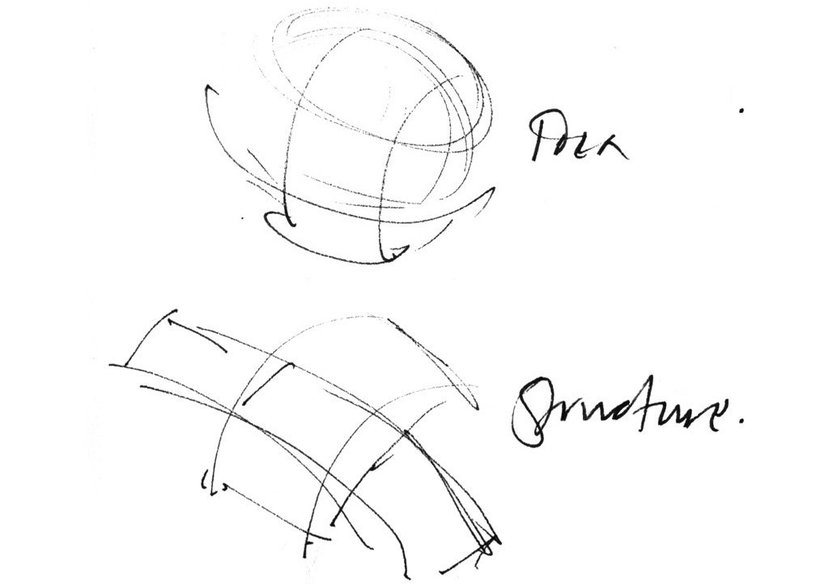
How can a design approach enable better understanding of complex data streams in remote monitoring?
Humankind is entering a new phase in its evolution as data and digital tools become increasingly inseparable from our industries and domestic lives. The proliferation of Artificial intelligence automating collection, distribution, analysis and communication of data for business, utilities and social-media is driving machine learning with design processes now capable of functioning without sole reliance on human intervention. Cyber-physical systems now seamlessly interact via the Internet of Things, enabling humankind to enter a data driven knowledge phase in its evolution that is dynamic and reshaping the building blocks of social bonds in a collective emergent society.
Together, human and machine, are augmenting both life-enhancing efficiencies and energy industry productivity. This is happening through collaboration and language in the form of algorithms, interacting with new technologies and constructing human and machine hybridity. However, within digital networks, a new knowledge space is adapting and growing problems in data overload. With this problem arrives the need for developing improved insights for design to innovate user languages. Better insights from steering new approaches in methods design for understanding data, utilising smarter algorithm design from emergent interstices in new data visualisation is able to make sense of the increasing lakes of raw unstructured data requiring context.
This research focuses on identifying the growing needs for ‘making-sense’ of data through visualisation tools which require contextual understanding in both cyberspace and physical world experiences. The research explores challenges in the linkage between the cyber-physical new knowledge space of data emerging with the excessive amount of raw data and intending possibilities. The aim of the research is to improve User Interface Design through better visualisation infographics focused on remote applications in the energy industry.
This study develops effective measuring of data streams through a Design framework to identify benefits for management of complex systems. These systems are to enhance performance monitoring in the energy industry’s optimisation approaches of energy production as part of achieving NetZero.
The findings of the research show how a mapping approach could augment potential for users to visualize and make sense of layers of information. From streaming data inputs, which both consider patterns and behaviours from trace in workflow behaviours however importantly integrating emergent knowledge streams for design. Grounded Theory was used as a basis for an abductive constructionist methodology. This informed the development of a circular model by observing cause and effect through participatory design insights and feedback cycles. These methods enable and measure greater opportunity for new thinking, building collective intelligence for new knowledge in energy production systems design.
The research integrates participatory learning to involve more diverse and abductive input activities, ‘making’ using prototyping and reflective tools with a mixture of qualitative and statistical measurement approaches. From research feedback loops and insights developed from participatory design workshops, the research is integrating emerging patterns for designing visualisation prototypes. This increases visual languages that enable the building of new interactive apparatus, algorithms and dynamic cognition.
Key terms: Design, Organisational systems, Circularity, Data, Feedback
Key details
School, Centre or Area
Gallery
More about Damian
Biography
Head of School: The Design School, Kingston University providing vision, leadership and sustainable innovation in the design sector.
Fashion, Graphic Communication design, Illustration Animation and 3D design - UK sector leading Design school, entrepreneurial, research led and creative UG & PG portfolio of courses.
RCA: PhD candidate - Design / Central Saint Martins: MA Fine Art /
Long-term engagement in design education, the realities of managing a London studio and the fluid creative requirements of being a practising designer over three decades.
Previous expertise working in industry co-directing a photographic & design studio for 20 years in Clerkenwell, London. Photographic design for global FMCG, international packaging and branding campaigns.
Vision-driven agile management style that supports inspiring, passionate and innovative learning environments with student-centred, collaborative and co-design cultures as central to the community of learners.
Lead on the development & promotion of Higher Education based collaborative partnerships nationally and internationally in design.
Designed & written a broad dynamic portfolio of current, creative & energetic UG and PG design, lens based, 3D design and fashion courses - Course / curriculum development consultant for a broad range of private HE educational providers.
Promote & manage activities for research / enterprise / scholarship in design subjects at KSA / Kingston University... growing internal and external profiles.
Degrees
MA Fine Art:Printmaking & Photomedia - CSM UAL
PG Cert L&T in Art & Design - UAL (Dist)
BA Hons Fine Art: Printmaking & Photomedia - CSM UAL (1st Class)
Experience
Head of School: The Design School KSA Kingston University 2018 -
Deputy Head of School/Head of Design: London School of Film, Media & Design 2013 - 2018
MA Programme Leader - Design based subjects - UCA Epsom campus 2007 - 2013
MA Coordinator: PGT Design & Comms portfolio - UCA Farnham campus 2005 - 2007

